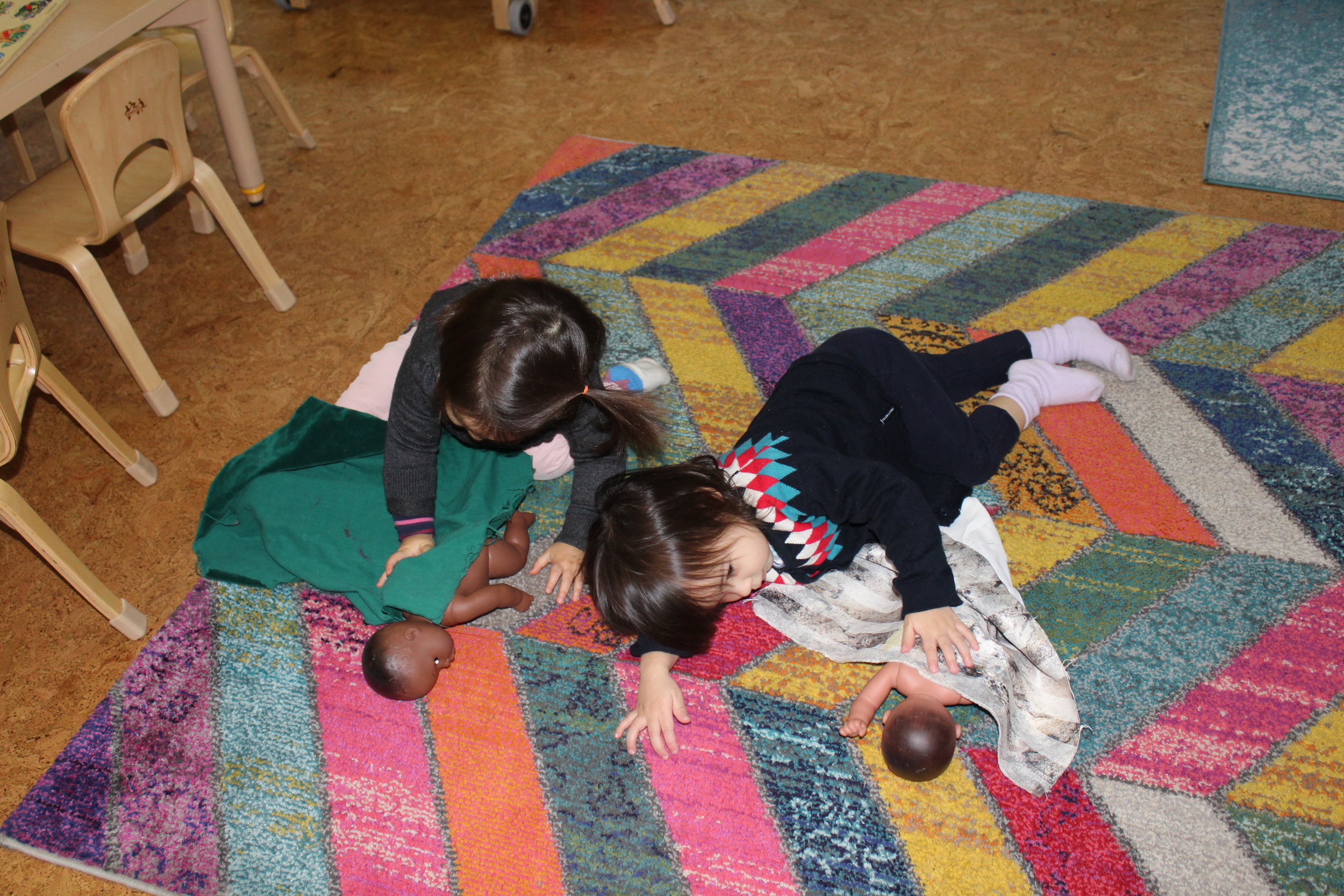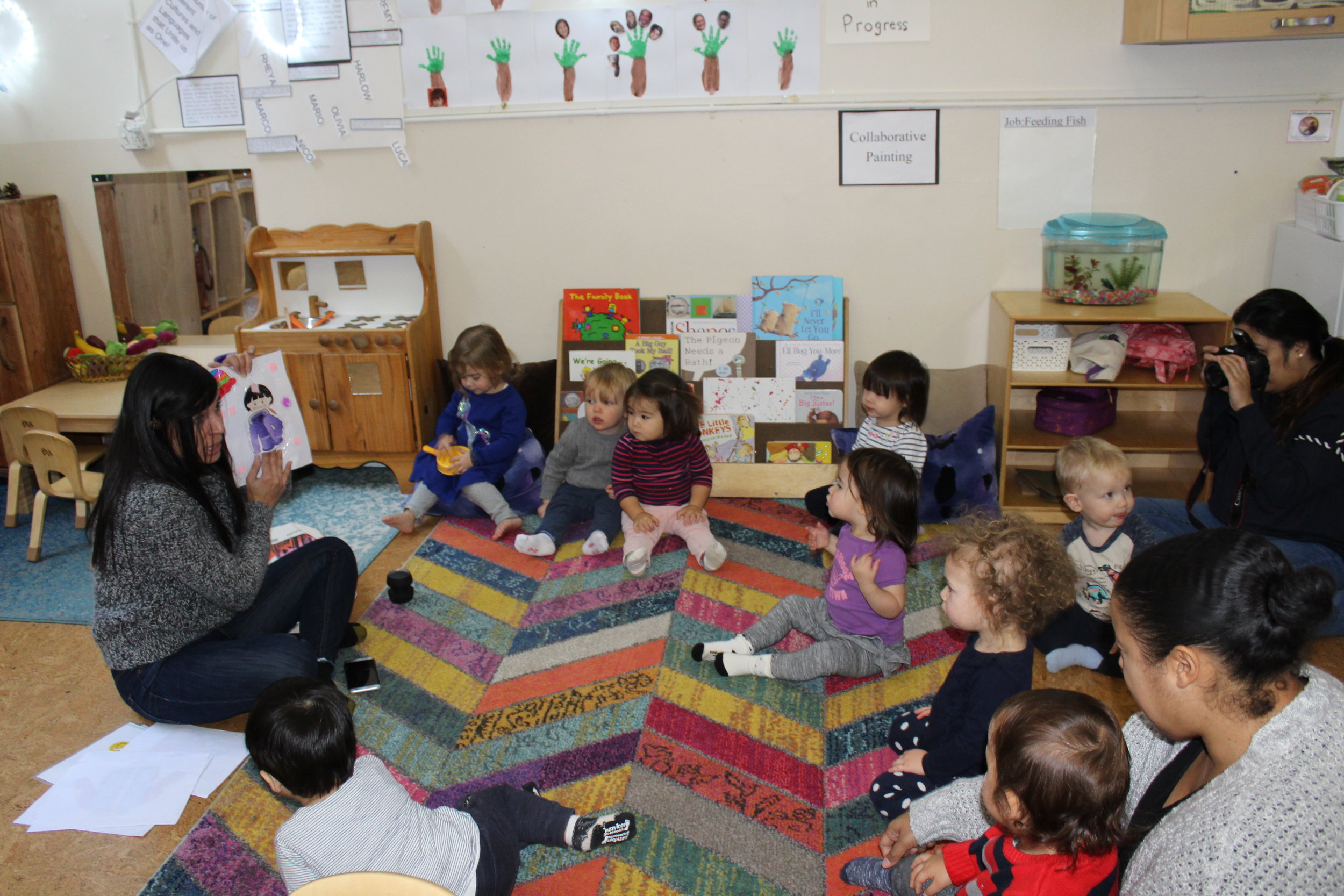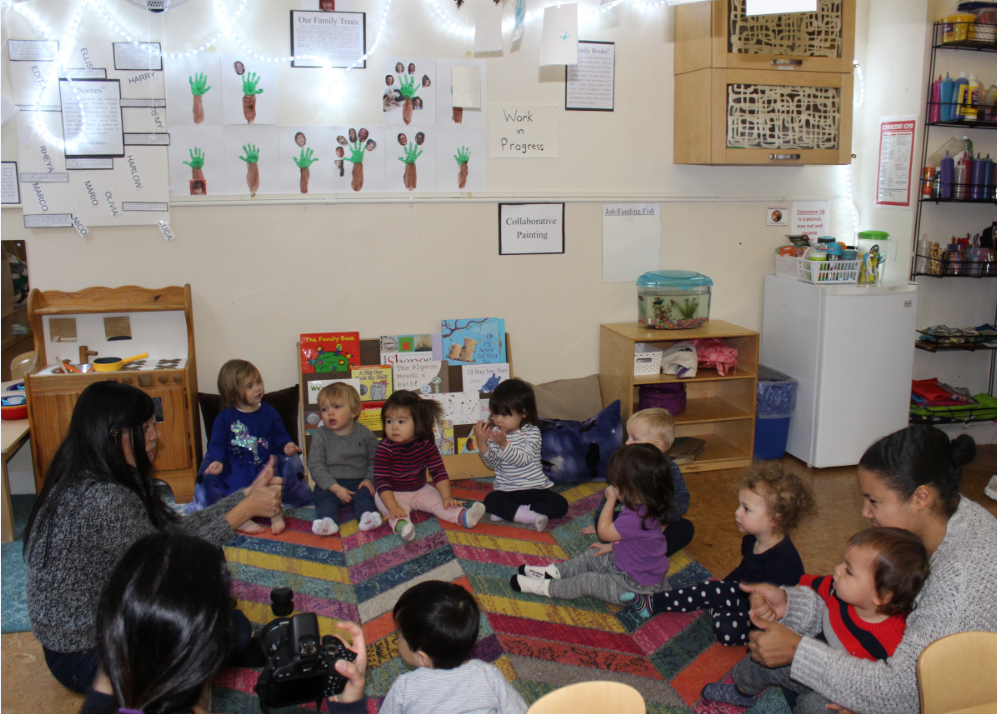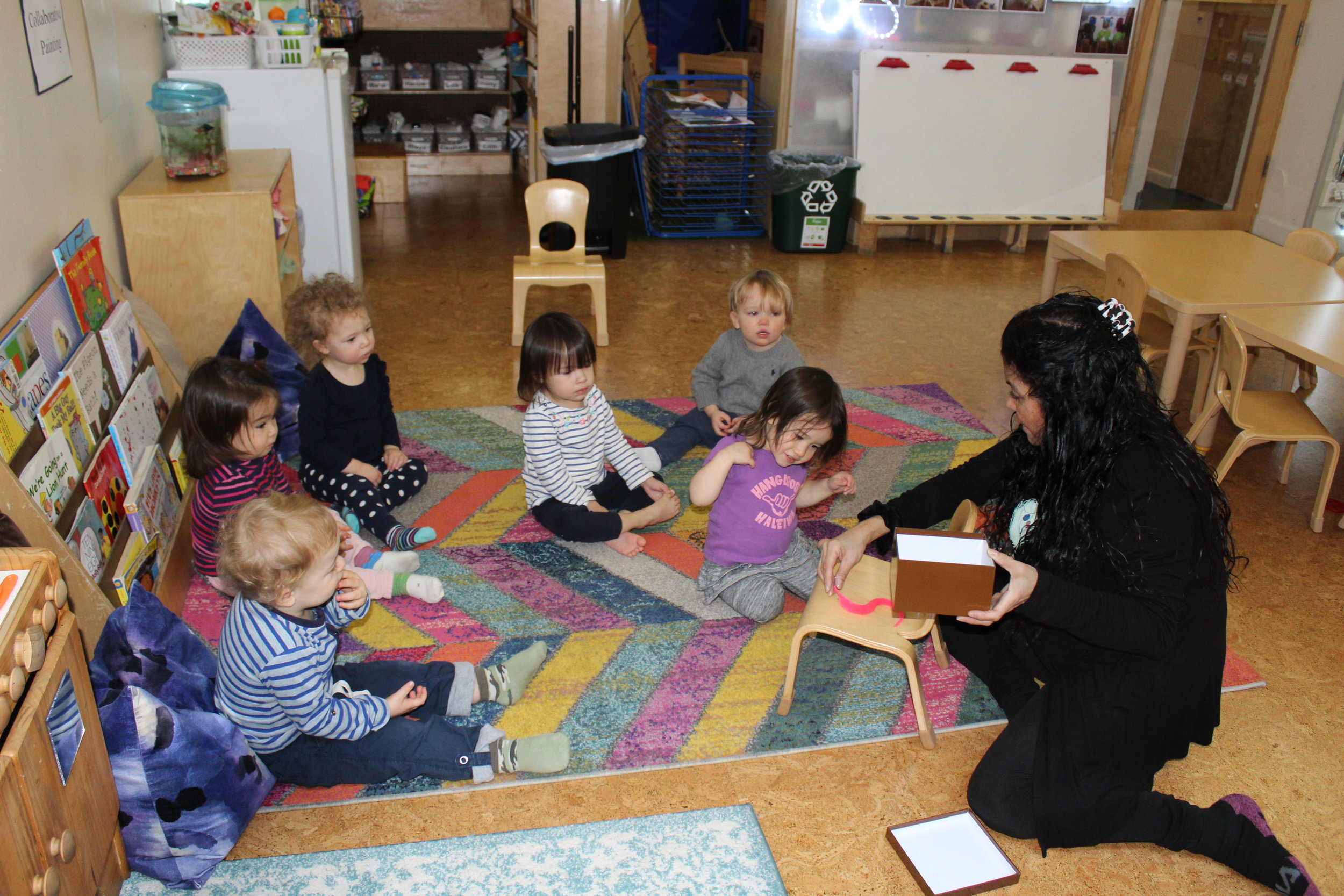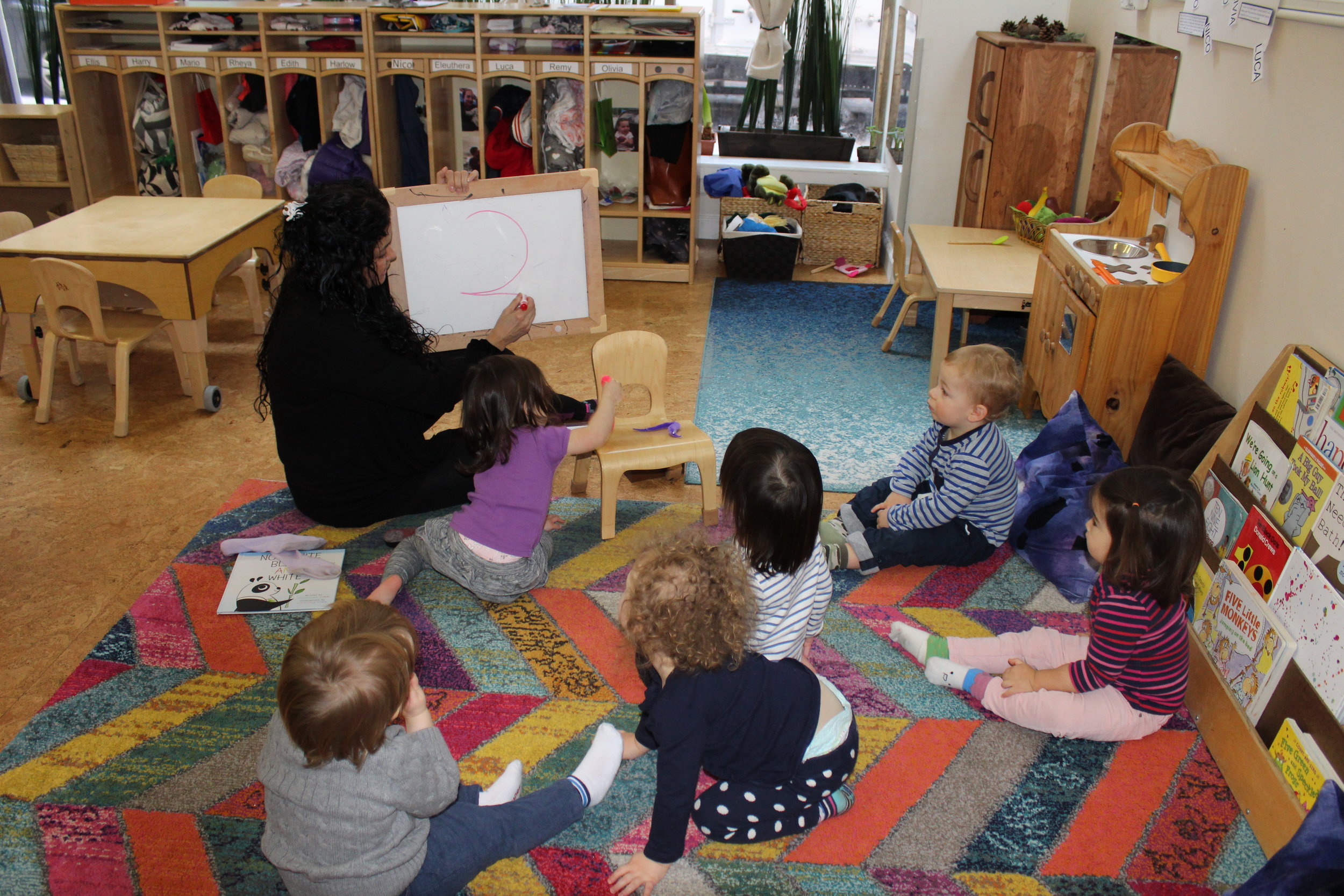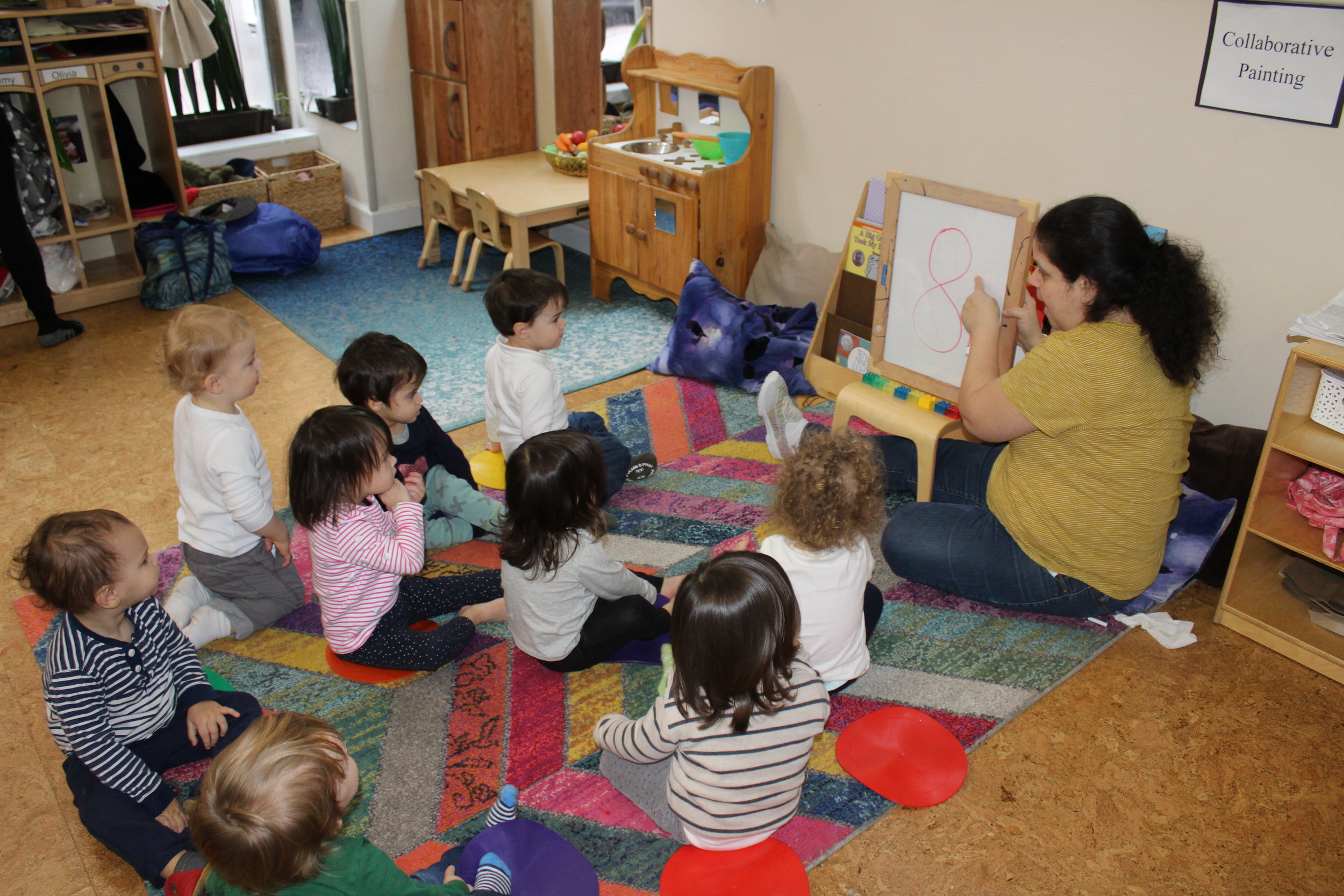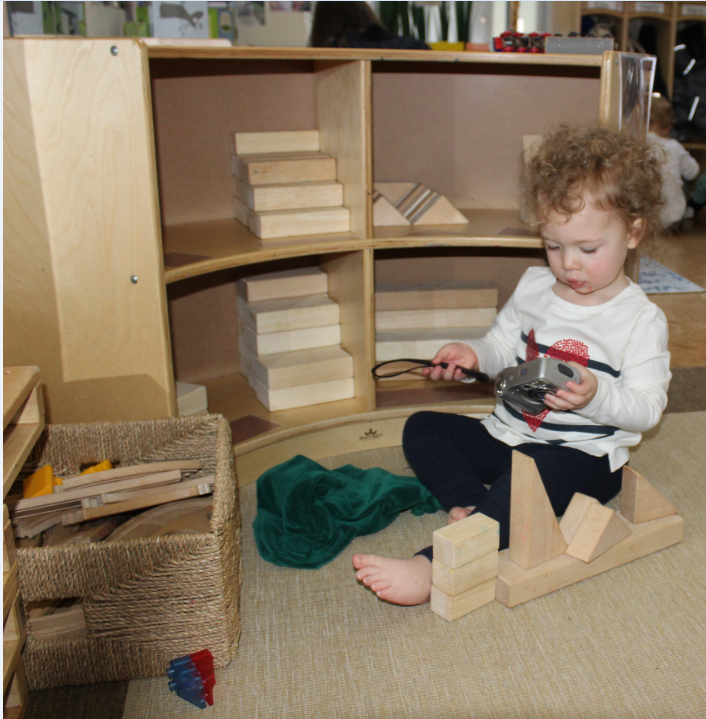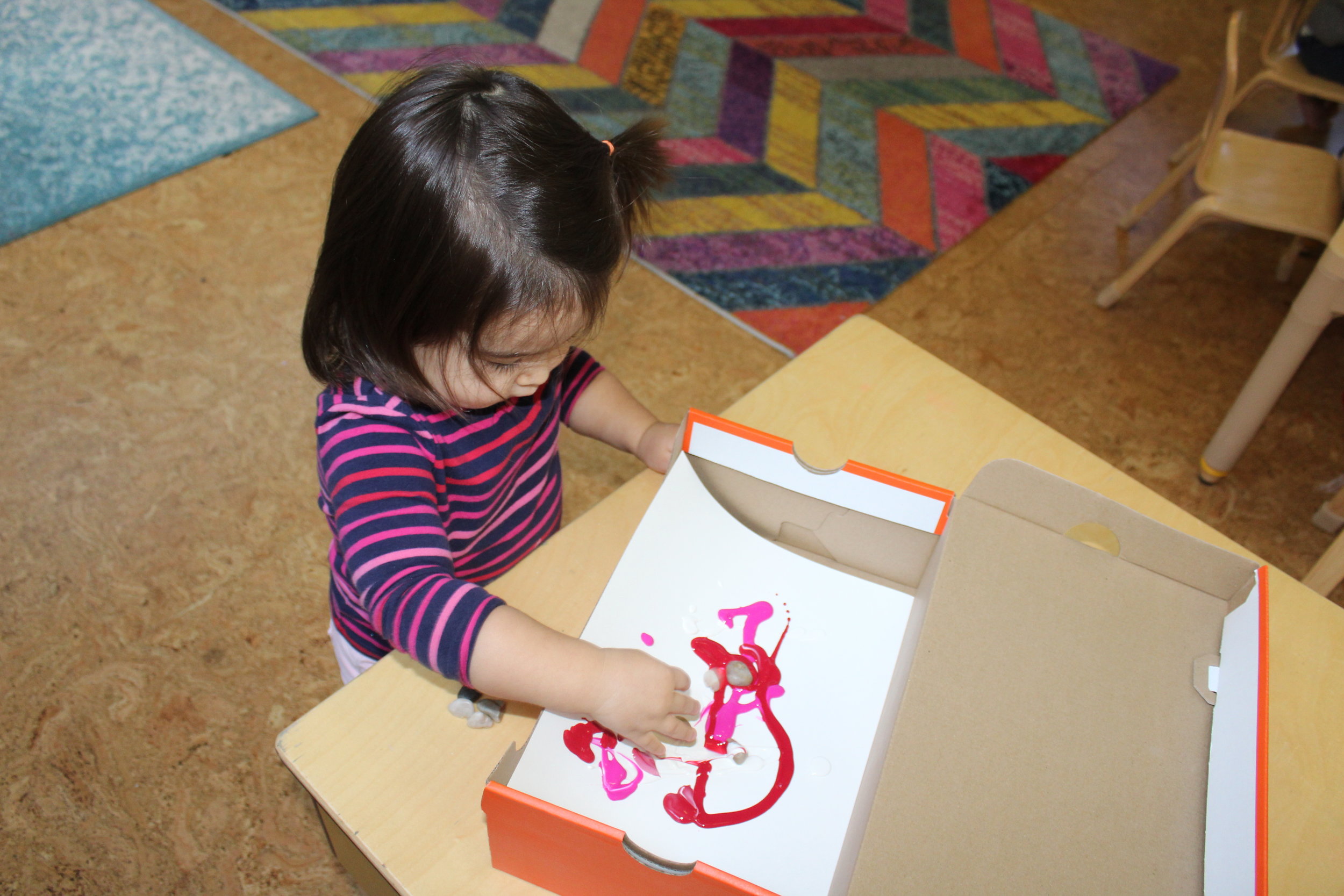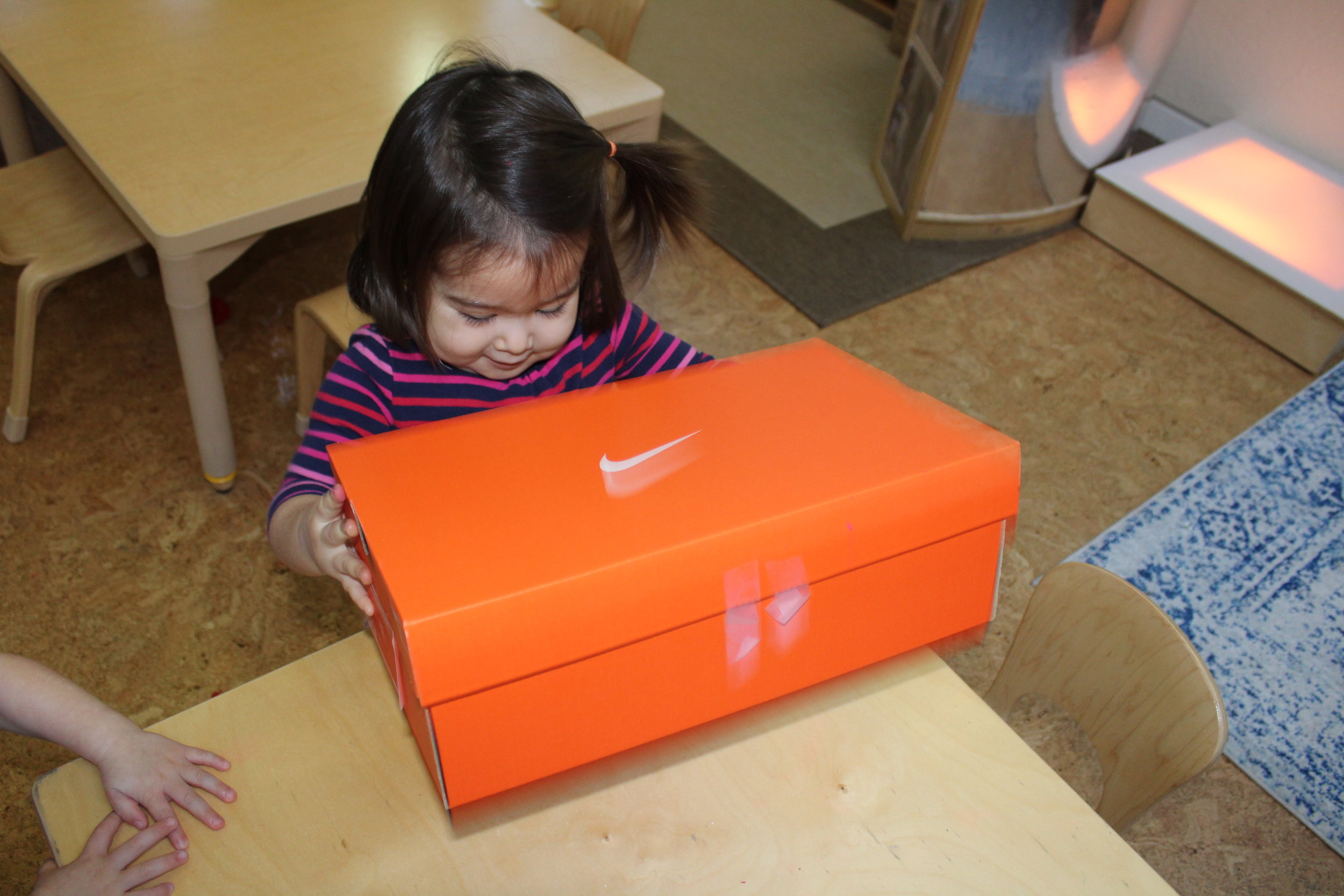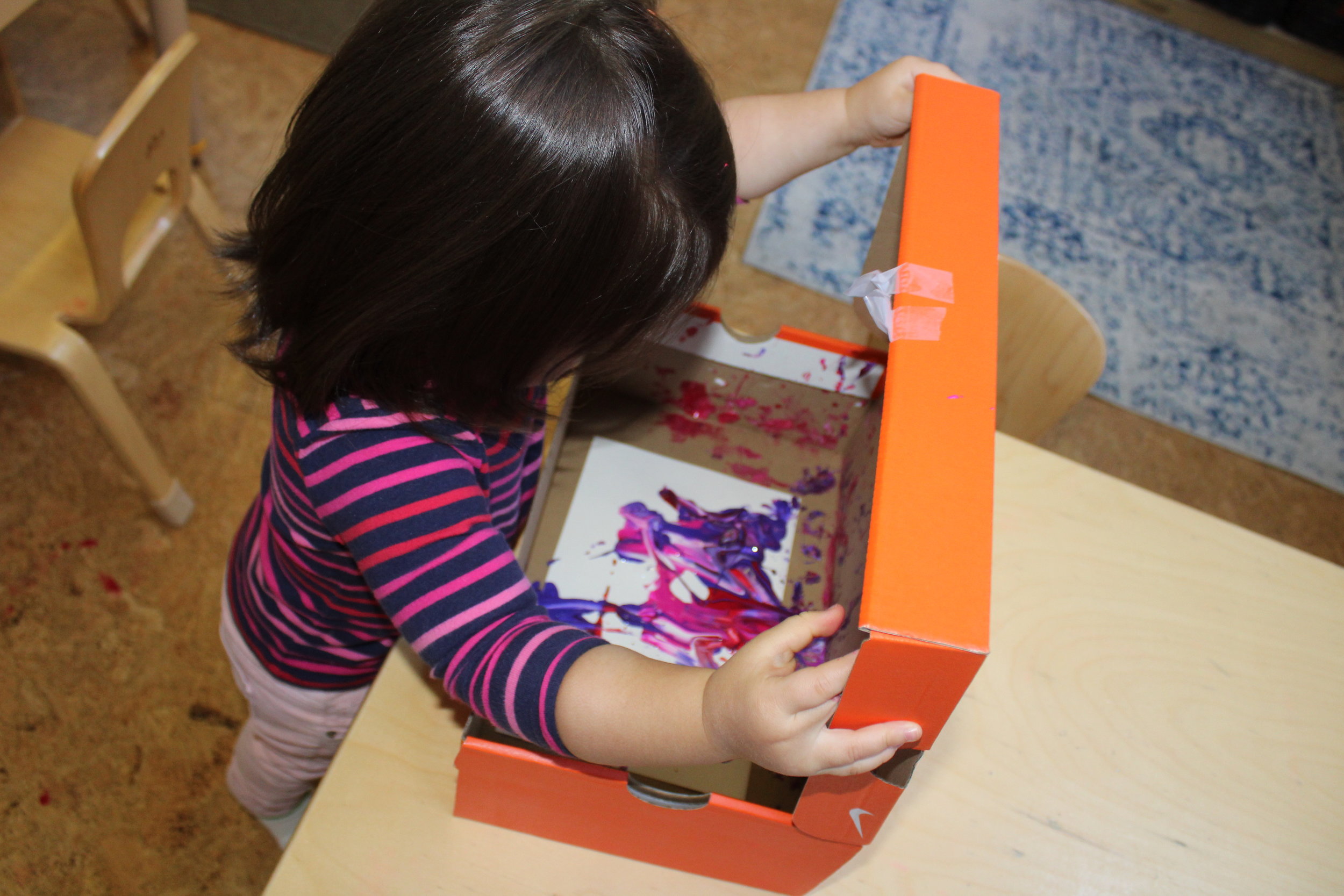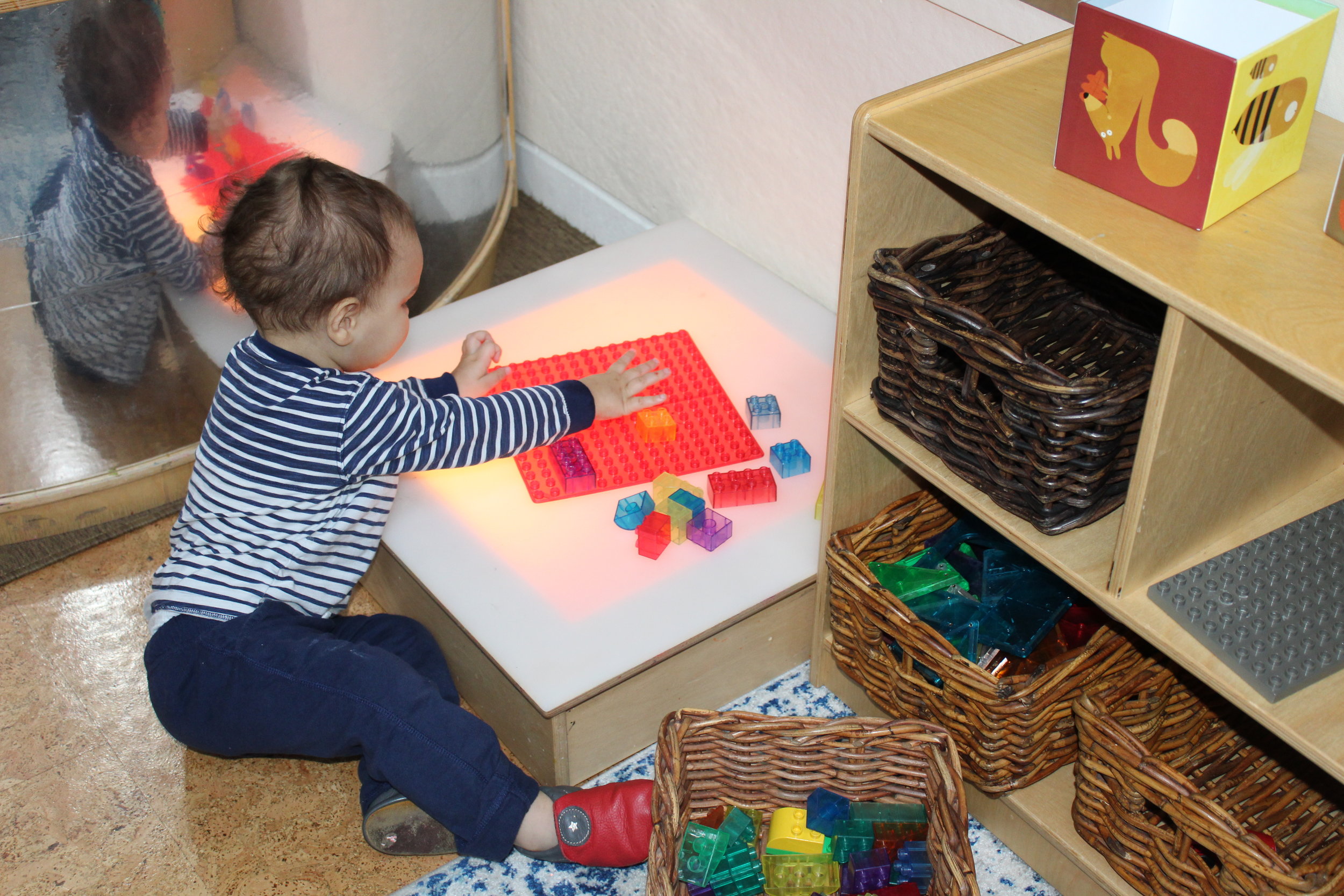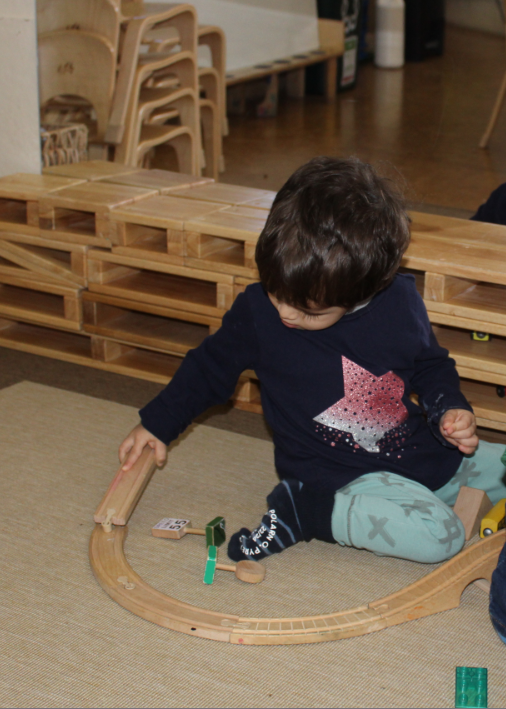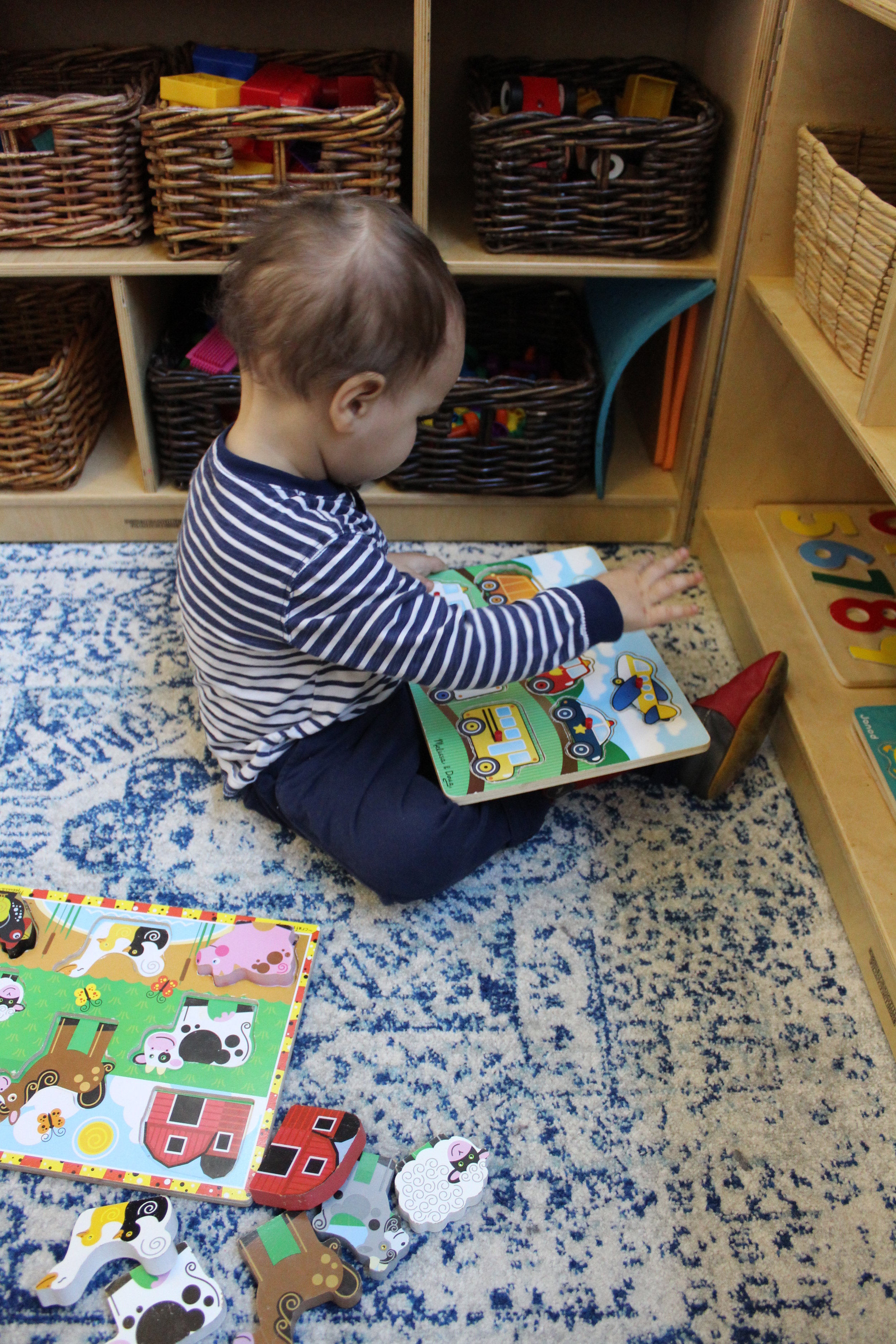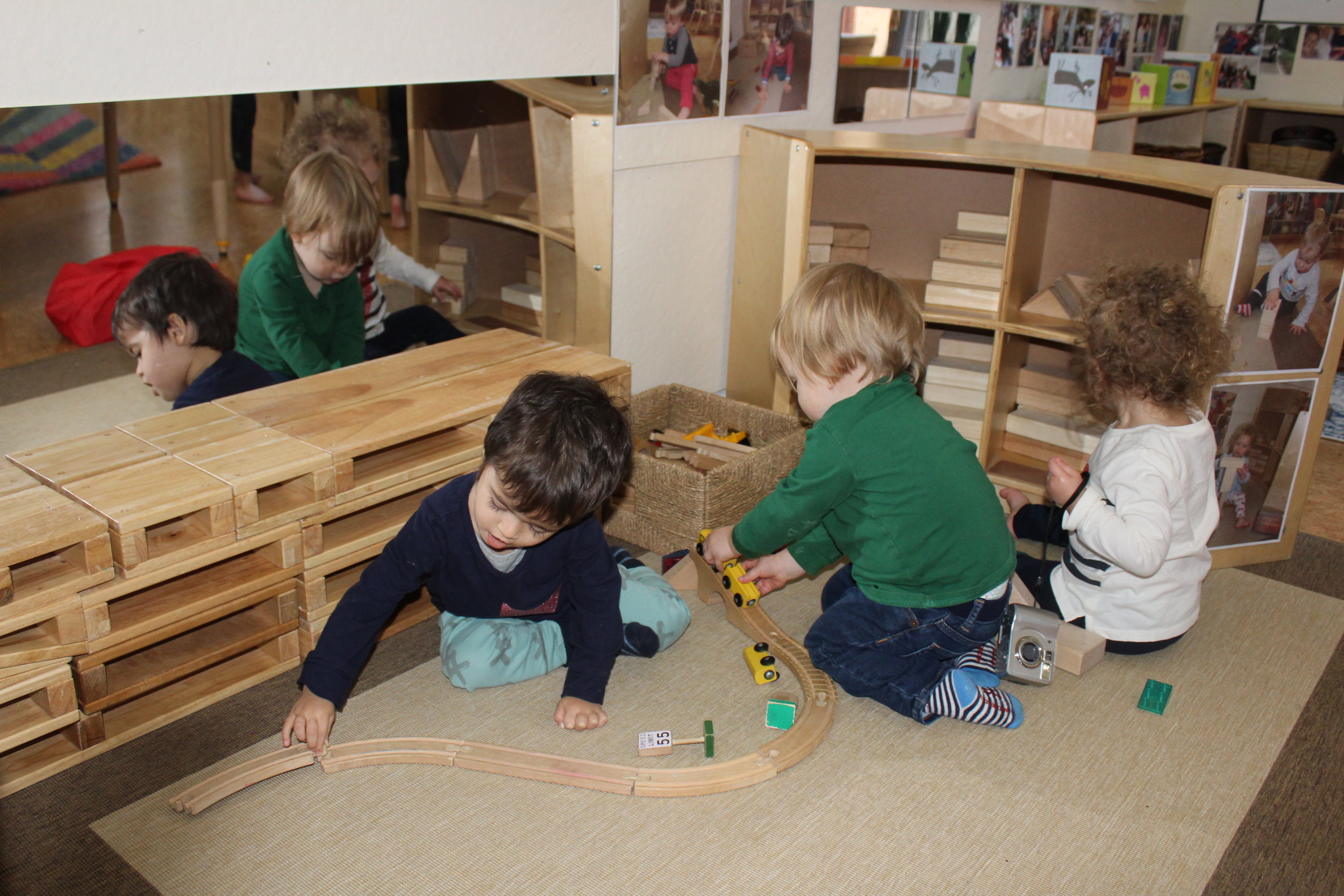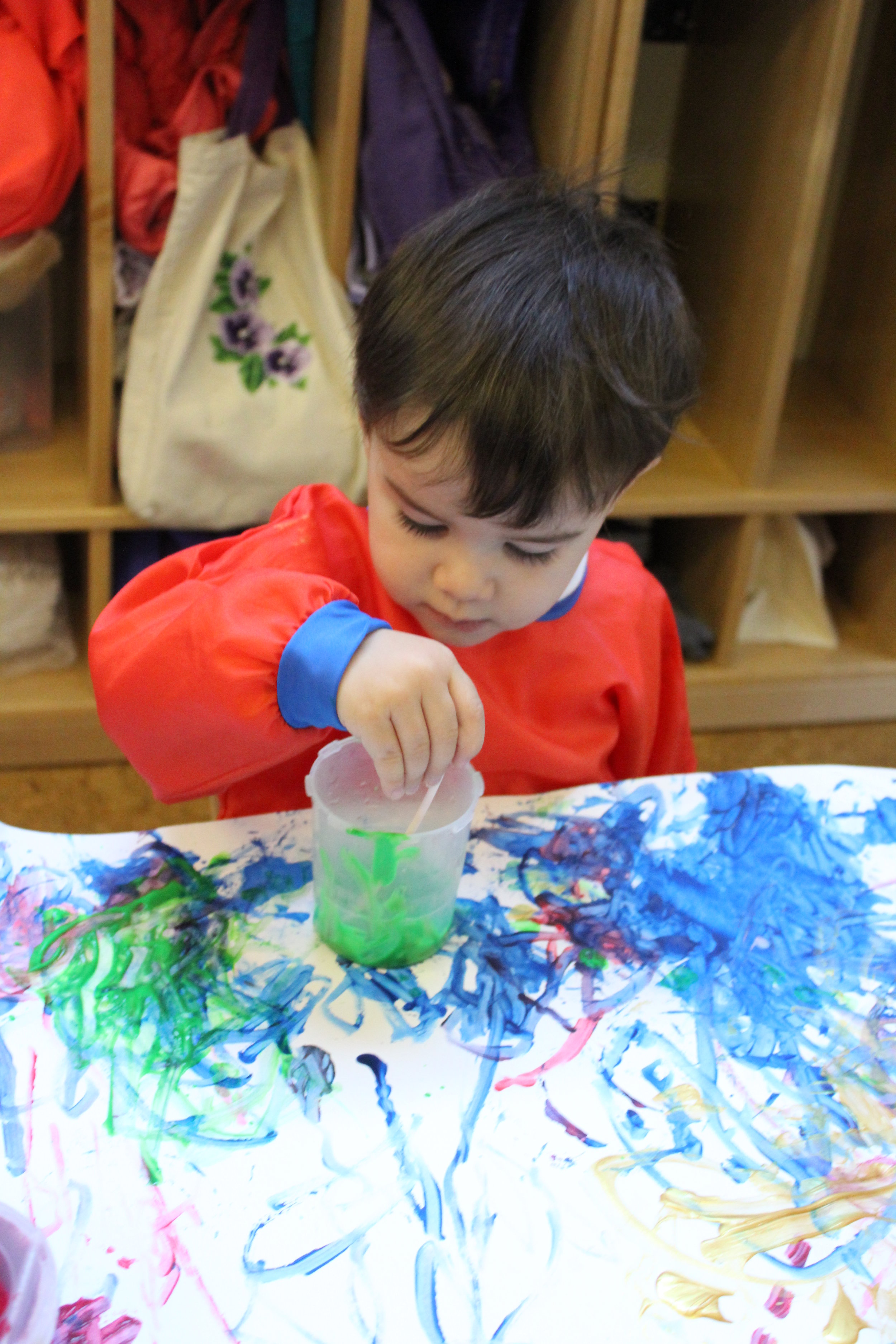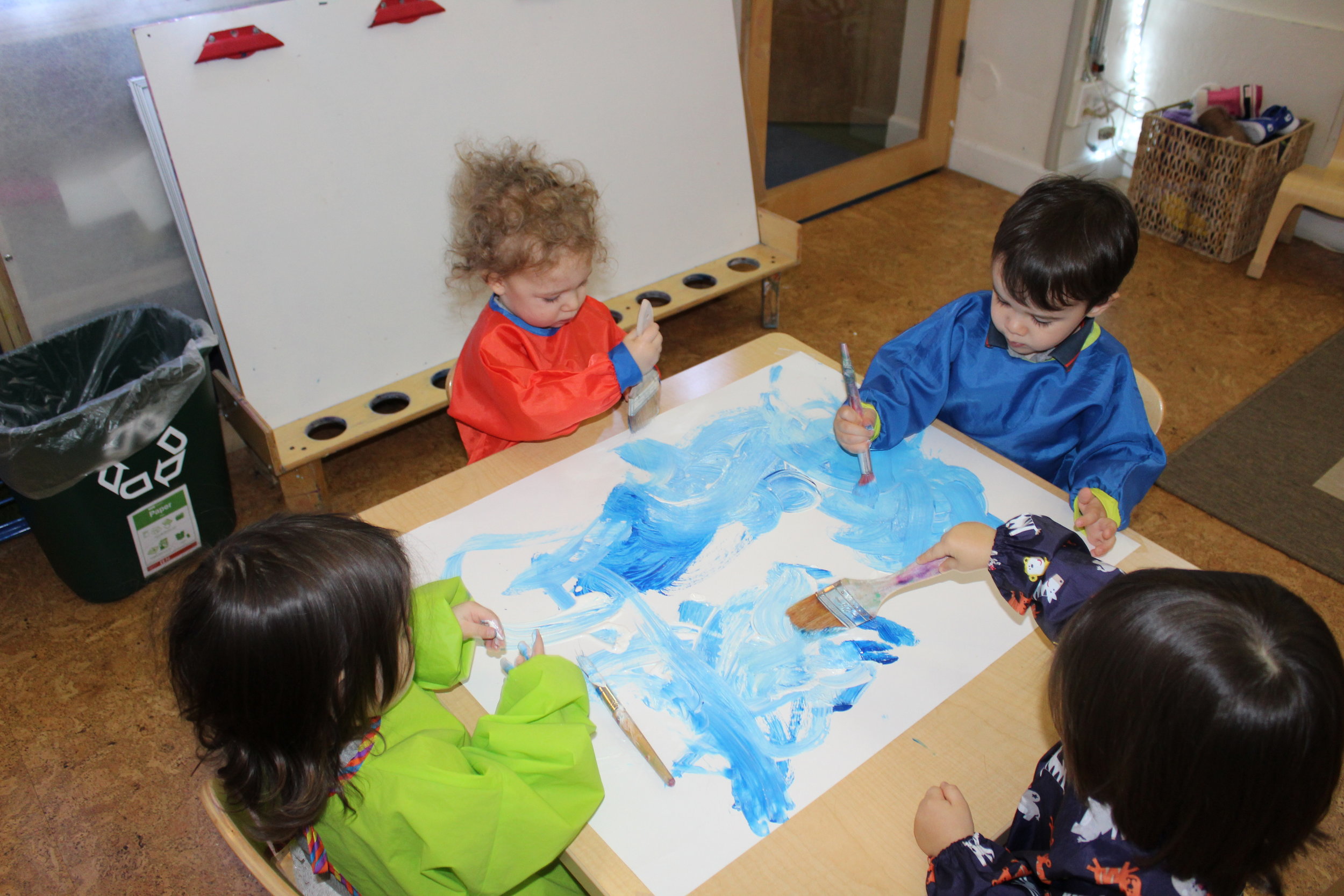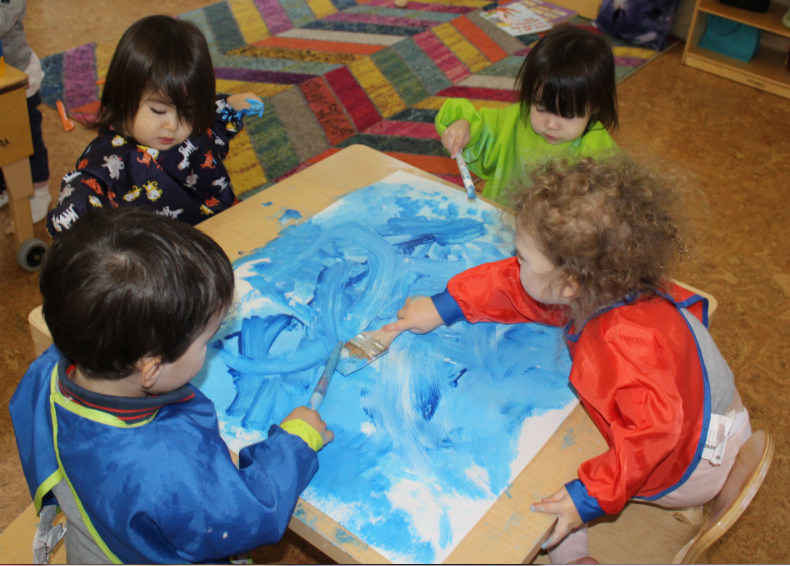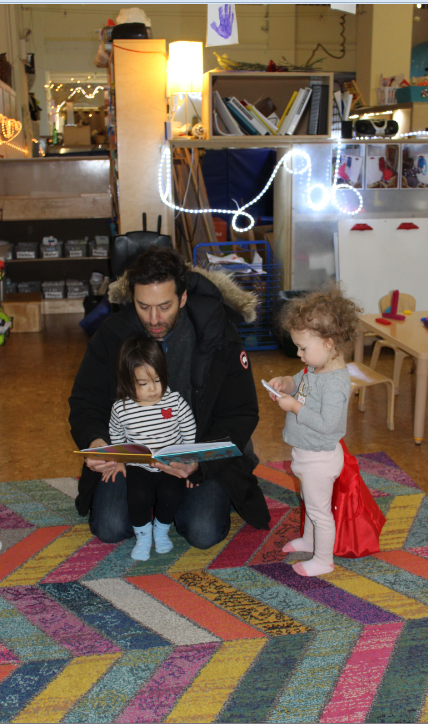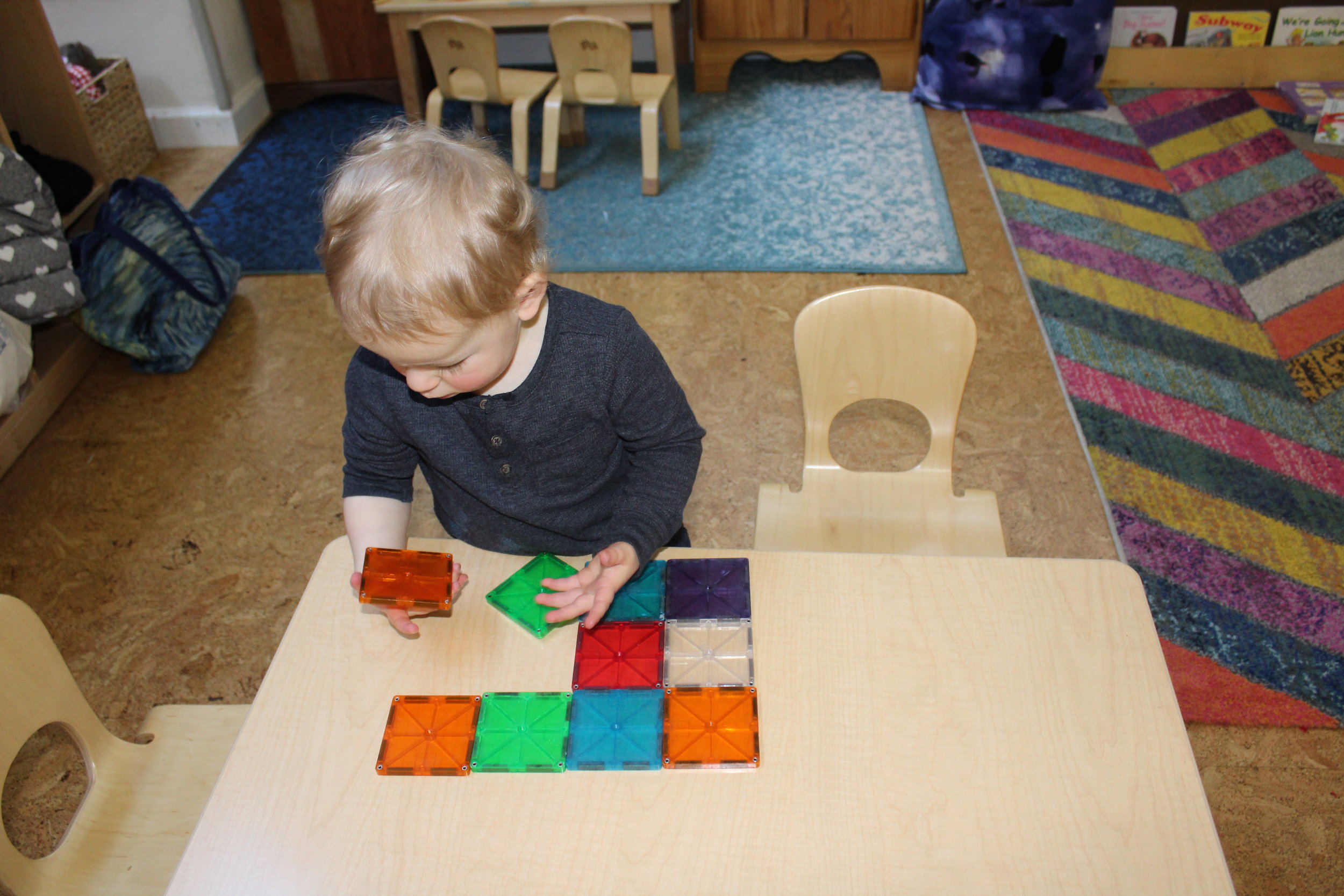Happy New Year!
I welcome all parents and children back to school.
As the children enter the classroom for the first time after being away from school, I observed how they have changed. During this period they grow and develop an understanding and use of words rapidly. Most children said two or three recognizable words and as their language builds, they will progress to a conversation of two or three sentences. Each child develops at different rates. It isn't necessary to be alarmed if your child has not reached certain milestones that other children the same age have. Development is a journey.
During our first circle time, the children appeared excited to sing and articulate their names. We sang some of our favorites songs, Mr. Sun, ABC, Head and Shoulders, Mr. Muffin Man, and many more! The teacher read a new book, Not Quite Black and White by Jonathan Ying and the illustrator, Victoria Ying.
Playing with Baby!
Children replay events they have seen or experienced in their environment. As they gain information and make sense of the information, they will project the knowledge they have acquired through play. Providing sufficient materials to extend their learning will enhance their imagination and creativity.
Spanish:
Circle Time:
We are using a box to put small items and asking children what they think it's inside the box. When the items are revealed, we begin to count. Counting is not only articulating numbers but understanding the concept of numbers. Utilizing moveable objects such as counters, blocks and small toys, makes number activities fun and easy to learn. Learning to count with understanding is a crucial number skill, but other skills, such as perceiving subgroups, need to be developed alongside counting to provide a firm foundation for number sense. This week we used eight Lego blocks and two fuzzy worms. We are now showing the number in a written form. It will help them to associate the numeral with the number of items. As we counted the Lego Blocks, all the children began to articulate the colors. The teacher's focus was the counting, not color recognition. The children independently made that decision. They will gradually form a mental image as we teach and demonstrate numbers and colors.
Blocks:
Remy used one double unit block, and she arranged on top, one large triangle, two small triangles, and one small triangle standing in an upright position. She also stacked 3 1/2 pillar blocks on the left. Remy explored, manipulated, and created a unique structure using the unit blocks.
Teacher: "What are you building?"
Remy: "Family!"
She lifted the small triangle standing in an upright position and said, "Dad” and pointed to the two small triangles and expressed, "Mom!" Remy did not express more information but continued building and rebuilding structures. Unit Blocks are timeless play materials that allow children to use their imagination and creativity.
Constructive play focuses the minds of young children as they engage with the materials in the classroom. Young children have a natural desire to find out things for themselves, and children acquire knowledge through active play. Remy has developed and moved from functional play, where she used materials in simple, repetitive, and exploratory ways, to constructive play, with purposeful activities that result in creations.
Art:
Shake it Up! Splatter Painting!
Painting is a way for children to explore colors. With Splatter Painting, we can experiment with different color combinations and make it a great color mixing activity. We used paper, small rocks, and different colors. We placed everything in a box, and Rheya squeezed drops of the selected colors. She moved the box up and down and side by side. She seemed to enjoy listening to the sound of the rocks crashing from side to side. As the paint splattered on the paper, the stones simultaneously formed simple, thick or thin lines. The process of a painting activity stimulates children minds as they use their hands and body movements.
Manipulatives:
Painting:
The children explored glue, blue and white tempera paint. They used their hands and different paintbrushes to spread the color on the cardstock. They used their hands and paintbrushes to explore. They noticed that as they mixed the blue and white a lighter shade of blue appeared. The teacher provided popsicle sticks and allowed the children to explore with them. They created lines in their painting with the popsicle and then placed in different areas of the painting. Beautiful work of art!! A variety of tactile experiences fosters children ability to understand how various materials work. It stimulates their cognitive, language, physical, and social/emotional development.
Rheya enjoys a reading session with her father as he reads a book of her choice before he departs. Arranging a routine and creating some familiarity helps prepare the child for a smooth transition from home to school.
Magna-tiles are versatile learning manipulatives that are designed to develop and strengthen motor skills including pincer grip, which is so crucial to fine motor development control. The children will build and rebuild different structures. Children can combine shapes together and form other shapes, and patterns. They foster imaginative play and creativity. The unique pieces engage children in in-depth investigations.
Teacher: "Ellie what are you building?"
Ellie: "A choo choo train!"

